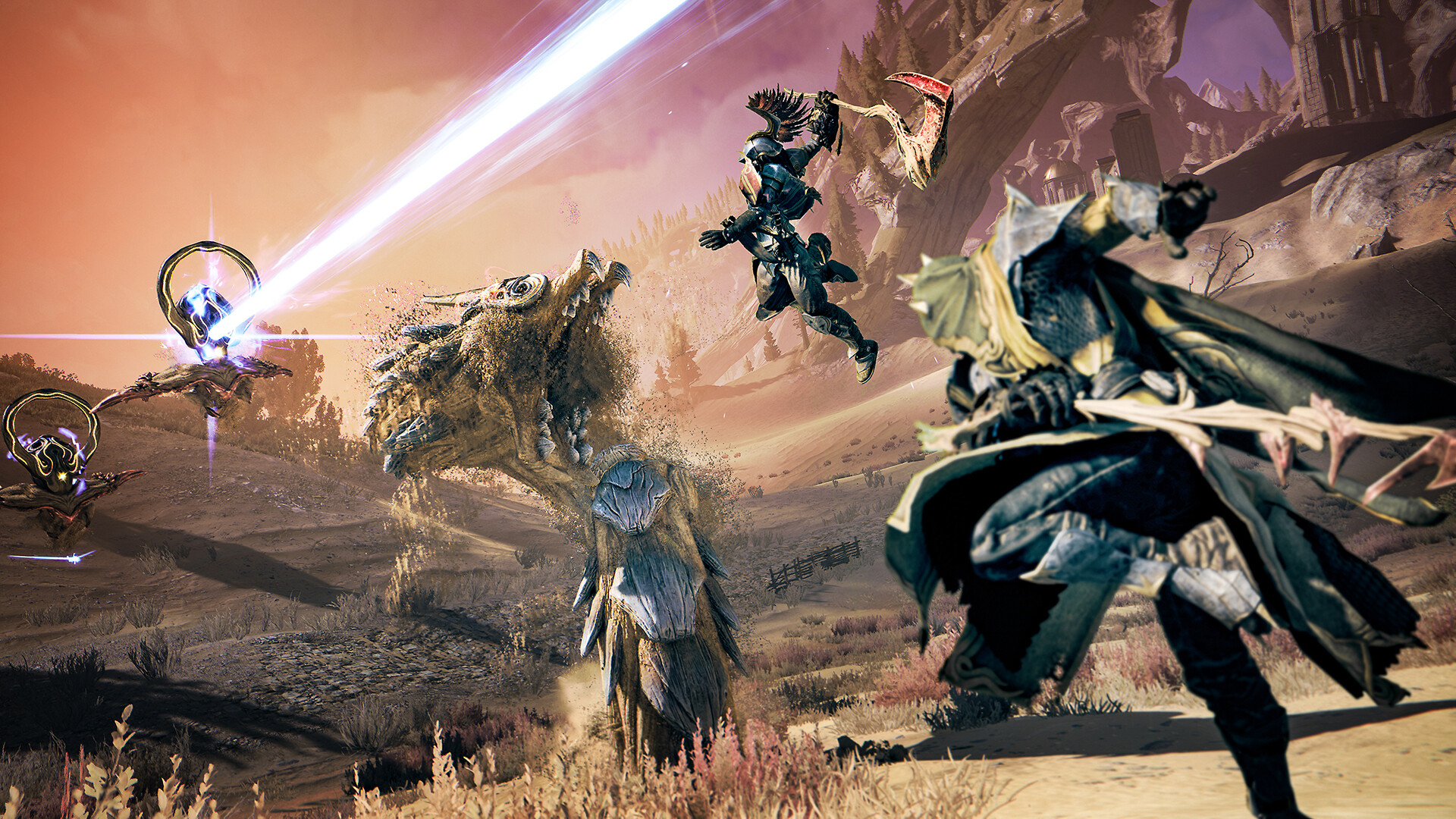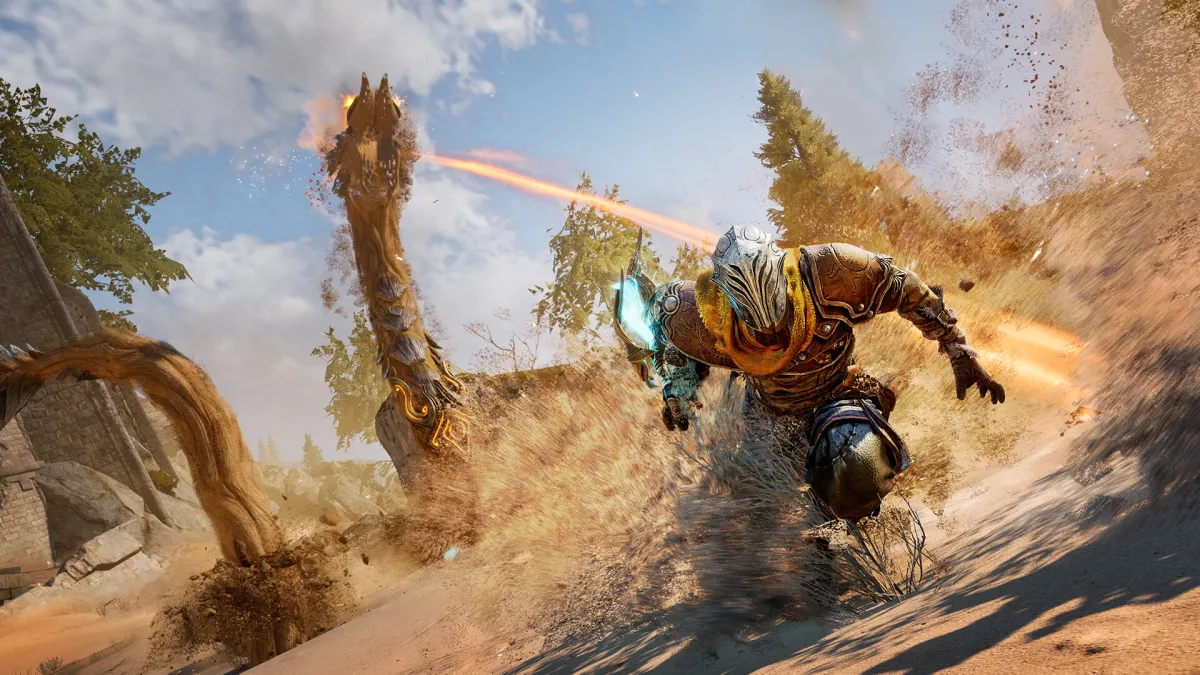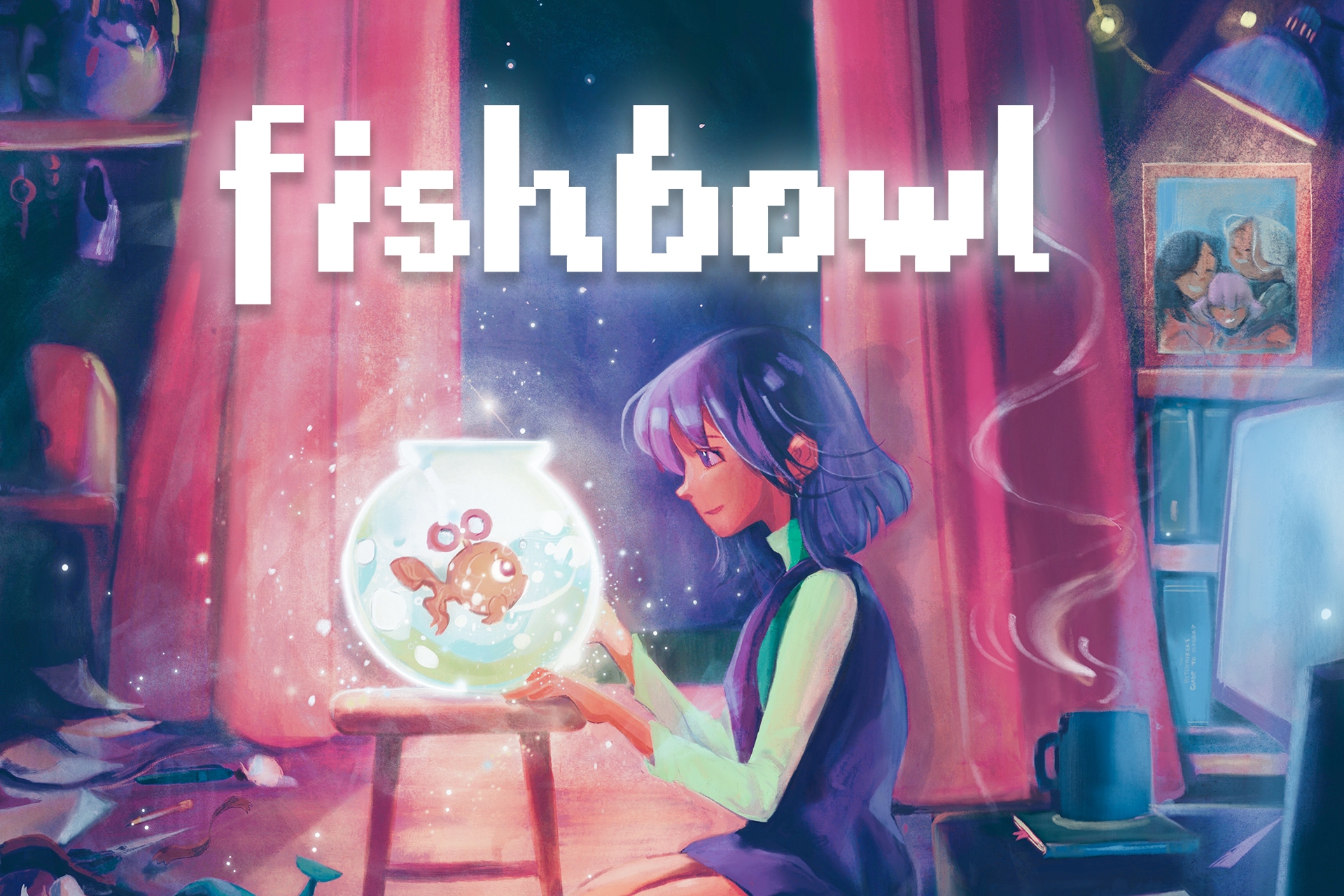You may know German developer Deck13 best for its 2014 Soulslike Lords of the Fallen and its spiritual successors The Surge and The Surge 2. Its games have, over the last decade or so, steadily improved and put their own spin on the foundation that Dark Souls laid for so many games that we play today. It’s surprising then that its latest effort, Atlas Fallen, does away with Soulslike staples to make for a much more typical — and sand-filled — action experience. In preview, it reminded me of games I played a decade and a half ago, and it left me wondering if Atlas Fallen is a continued improvement or a step back.
The demo build started a little ways into the game with a helpful tutorial video to get me up to speed with combat. The protagonist wielded a powerful gauntlet with two weapons stored within it: a hammer and a whip-like sword. Each had a simple combo, and holding down the assigned button produced a smash attack or a maneuver to quickly close the distance on an enemy. With a dodge and a parry move called Sandskin that can freeze enemies if timed right, it all seemed typical, yet a mechanic called Ascending mixed things up a bit by powering up either weapon, marked by a gauge at the bottom of the screen. As the gauge reached a new threshold, the basic combos changed and became more powerful; however, the gauntlet-clad hero took more damage as well.
With the crash course on combat out of the way, I took control of this hero (who appears to be customizable in the full game) after he had a little talk with a spirit called Nyaal that lives inside his gauntlet. Nyaal taught me how to use it to raise structures out of the ground — a mechanic that later aided in jumping puzzles — and then I was off battling sandy monsters called wraiths within an arid cave.

My time playing action adventure games like Darksiders and Kingdoms of Amalur: Reckoning prepared me for this first test fight. Smashing with the hammer and holding down buttons to latch onto enemies came naturally; the Sandskin parry timing was forgiving, and even though one of the sandy-dog monsters got stuck in the cave’s geometry, I found this initial taste of combat promising.
Out of combat, anywhere that there was sand I could glide, as if my protagonist had hopped on an invisible snowboard. Although, if I hit rock or grass or what have you, I could only run like a non-magical-gauntlet-owning peasant. Traversal was by far my favorite part of Atlas Fallen in preview. From here, I began to have concerns.
After the introductory cave, the game opened up to a vast area. Interspersed among the swathes of sand were ruined keeps and patches of forest that begged to be explored. Massive ravines impeded progress, and bridges had been blown out by something called “The Watcher.” However, that was okay because Nyaal taught me how to air-dash (and subsequently about aerial combat), allowing me to reach a little village filled with problem-ridden people with some atrocious voice acting. Seriously, it’s so bad it’s good. These villagers asked me to go to a place and kill those wraiths, or rescue other townsfolk over there. Elsewhere, I was asked to break down a statue of a god they don’t like. I also could follow a massive elk to reveal some hidden treasure — none of these diversions stood out, but none were egregious fetch quests, either.

A problem arose from the main mission to find shards to power up my gauntlet further, resulting in sand-sliding to one location or another for a fight with some wraiths before rinsing and repeating. Other than some simple platforming, there were no sprawling dungeons to explore or puzzles to solve, only more granular foes. More difficult wraiths required me to break off parts of their body to defeat them, but by the time I found the three shards required to upgrade my gauntlet, I began to remember why the genre shifted away from this style of play to either more methodical Soulslike combat or adrenaline-fueled hacking and slashing.
Even with Essence Stones to uncover — upgrades that give passive bonuses and new attacks with cooldowns based on the Ascension gauge level — Atlas Fallen felt dated and clunky. I’ve spent the last week enjoying the fine-tuned combat of Wo Long: Fallen Dynasty, so maybe that had something to do with Atlas Fallen coming off as almost archaic in preview. Granted, the demo lasted only about 80 minutes, so the combat might blossom into something much more cathartic a few more hours in. I hope it does. Still, after I cleared the demo’s boss, for a moment I feared I would have to go pick up more gauntlet pieces by slaying even more sandy enemies. I experienced relief when the screen faded to black instead.
A sizzle reel of massive foes to best, co-op gameplay, and more jumping puzzles concluded my short time with Atlas Fallen, and what I didn’t experience looked great. If the core combat can expand into something satisfying and playing with a friend works seamlessly, Atlas Fallen might make for another notch on Deck13’s steadily improving belt — despite dumping Soulslike mechanics as one pours sand out of a boot. Or it might make for another effort that neglects to carve a niche for itself outside of feeling somewhat dated. Regardless, we’ll find out when Atlas Fallen releases on May 16 on PlayStation 5, Xbox Series X | S, and PC.






Published: Mar 17, 2023 10:00 am